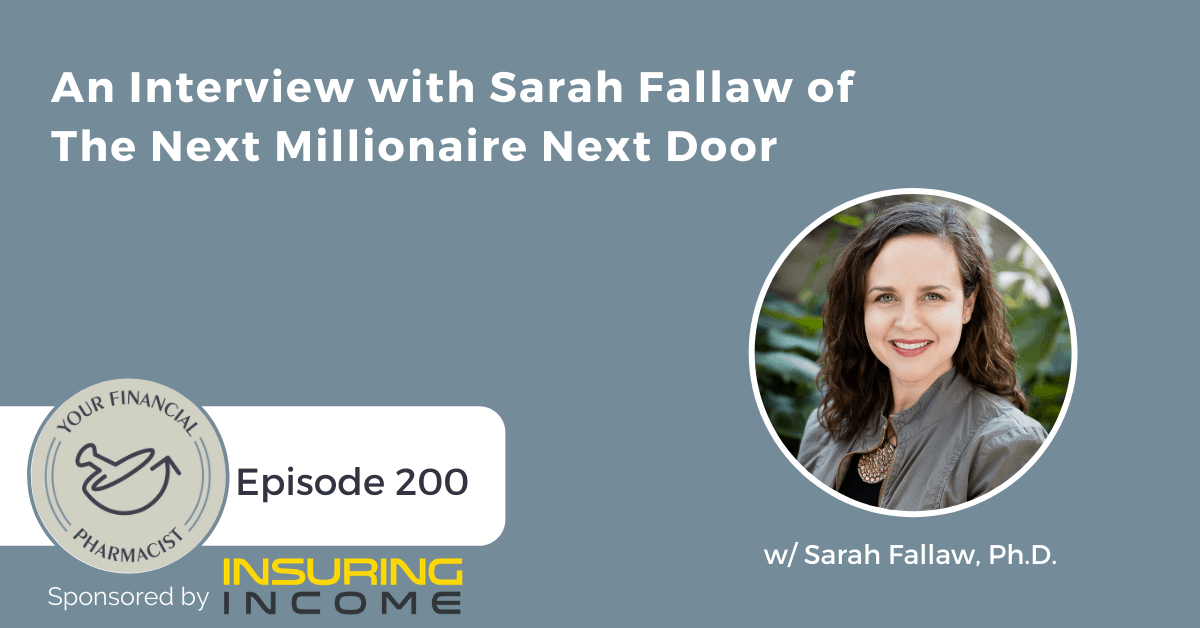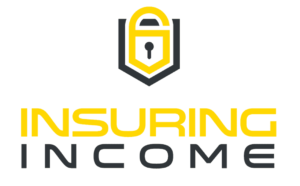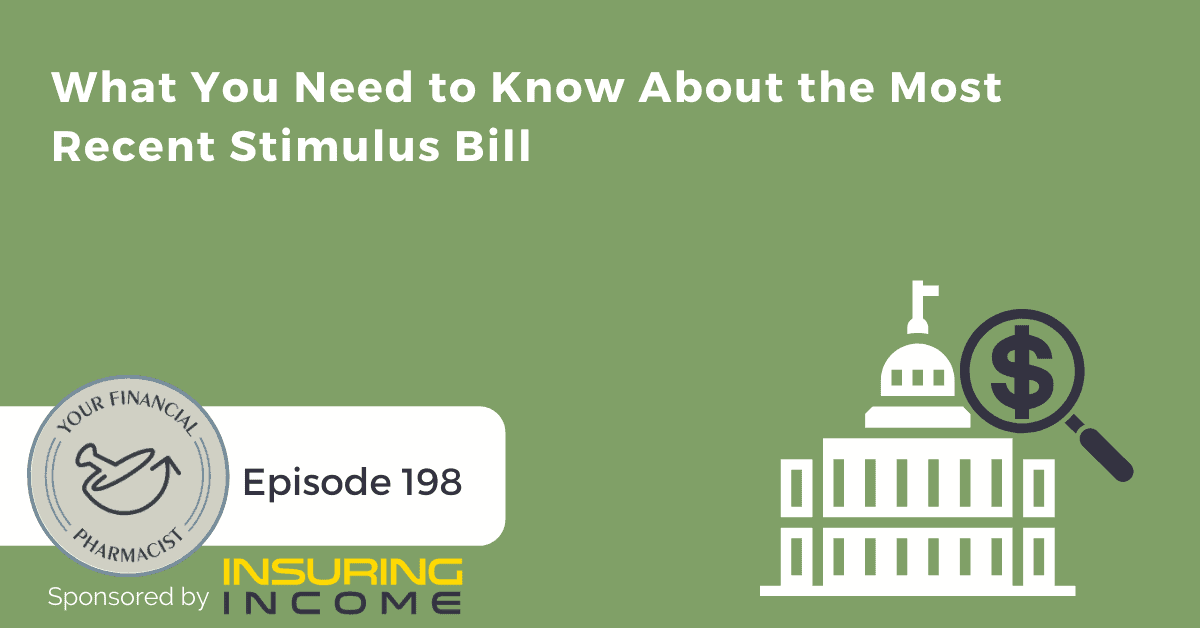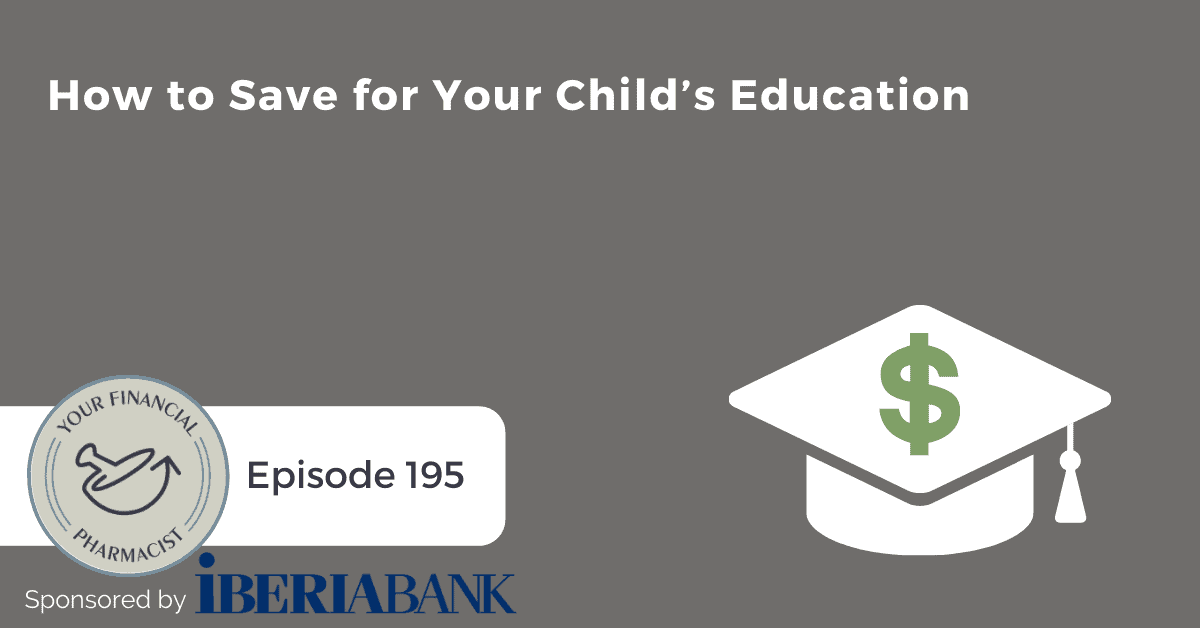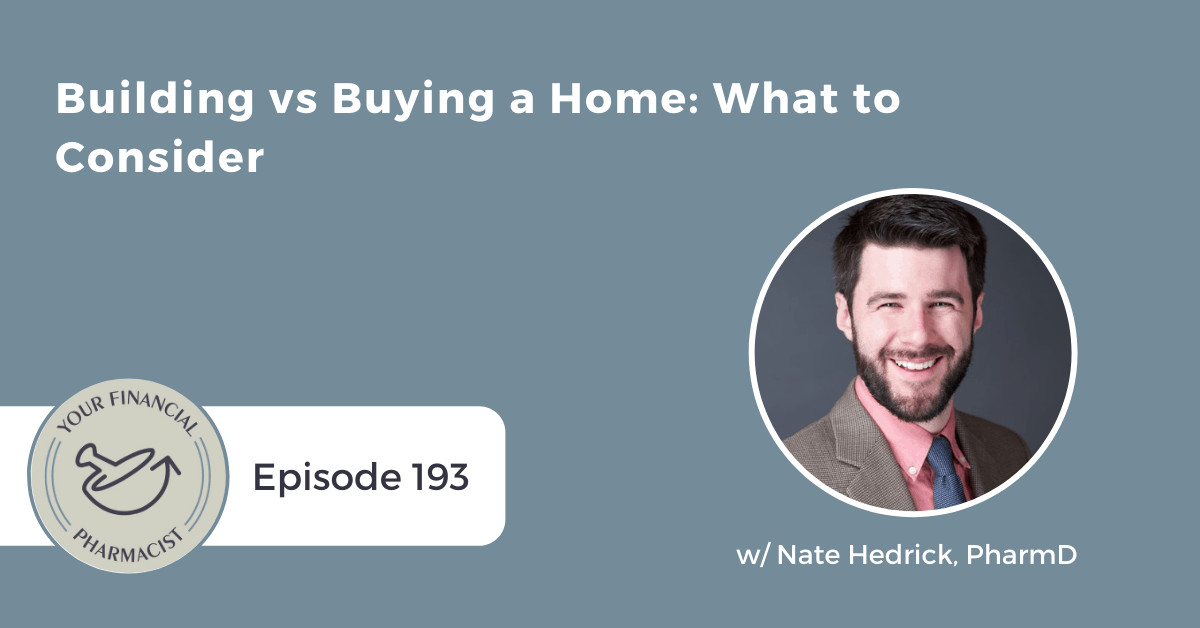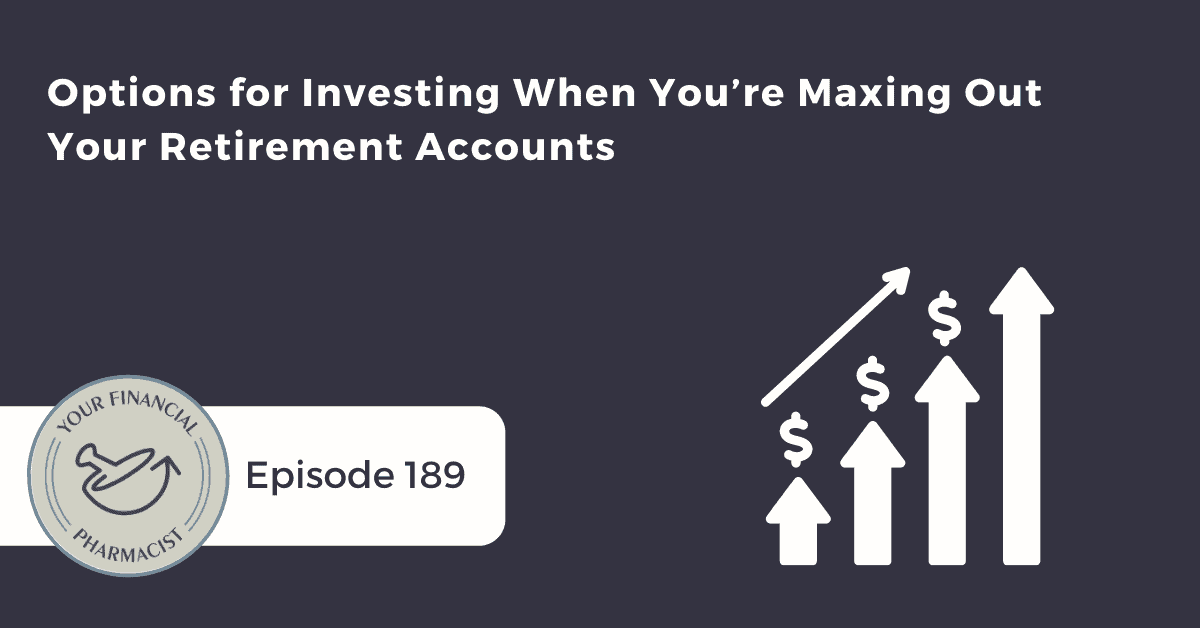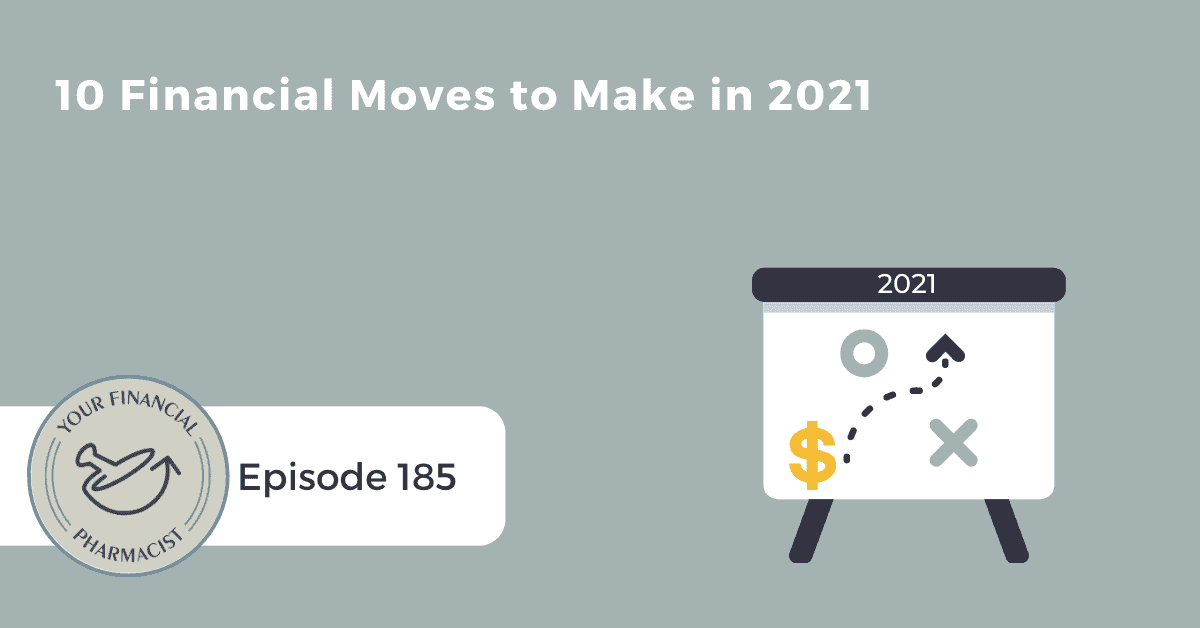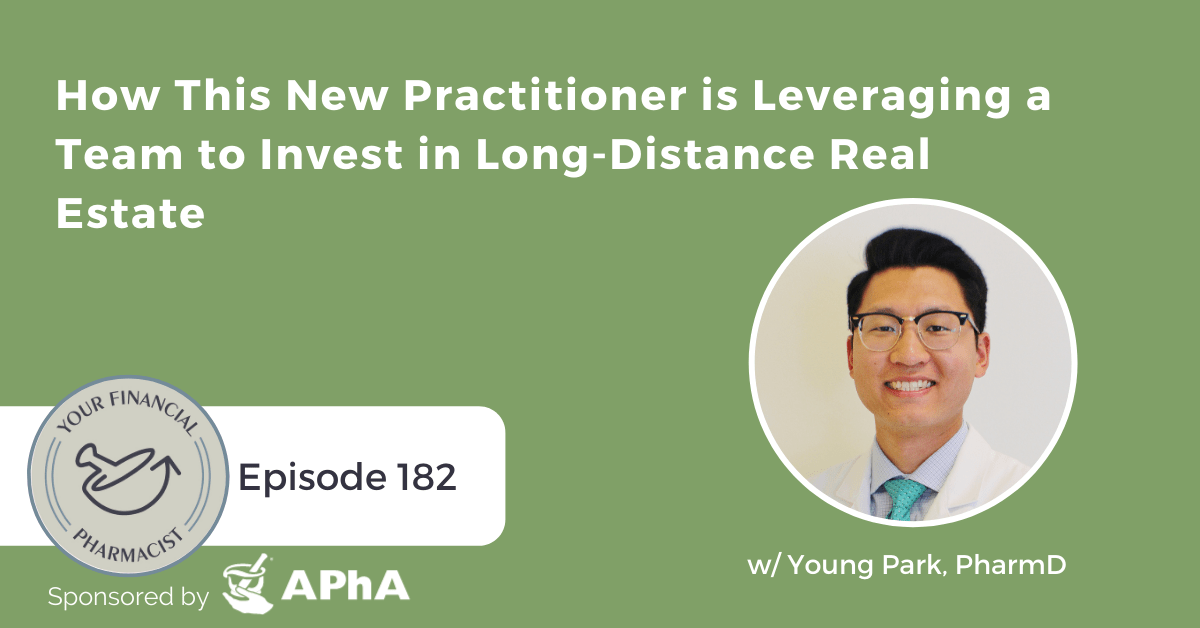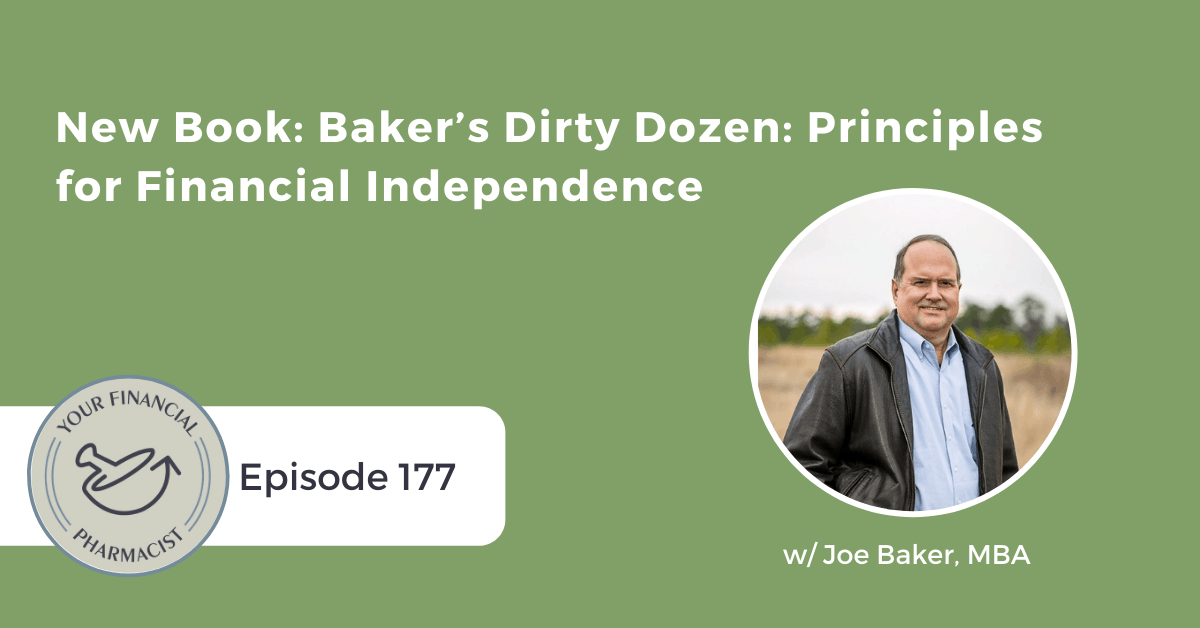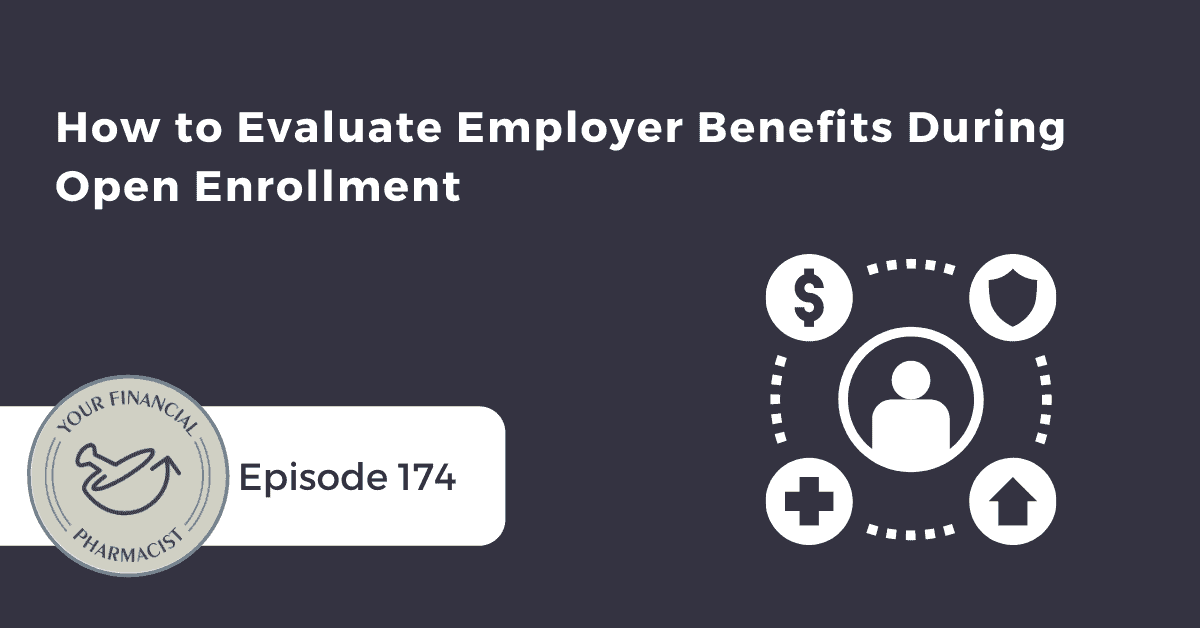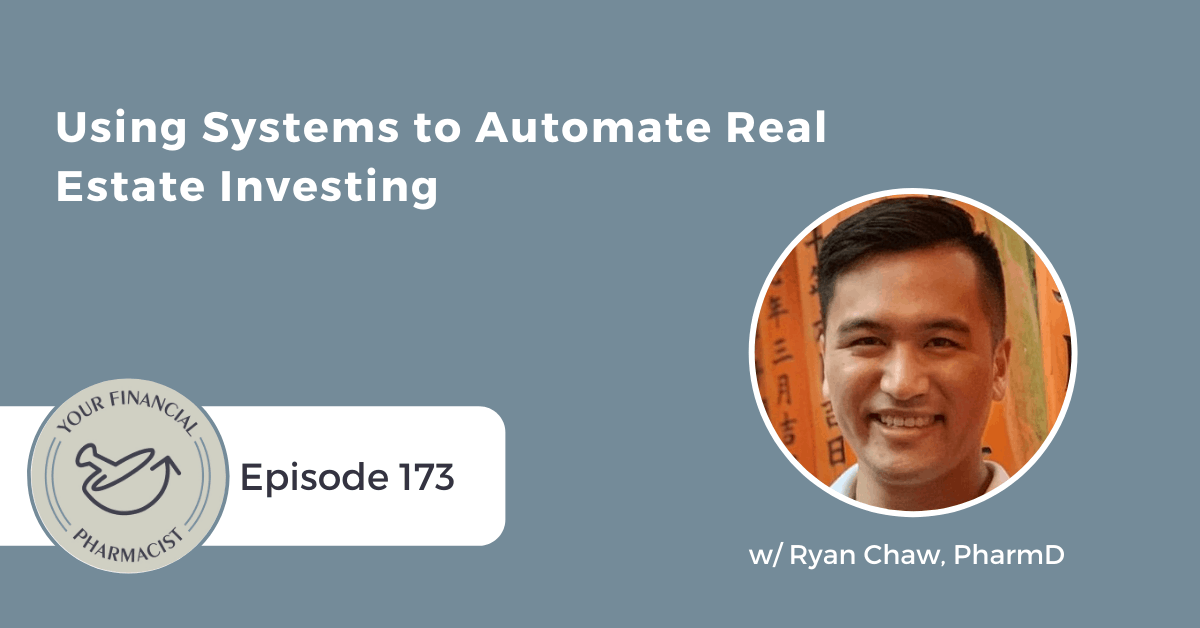An Interview with Sarah Fallaw of The Next Millionaire Next Door
On this episode, sponsored by Insuring Income, Dr. Sarah Stanley Fallaw, co-author of The Next Millionaire Next Door and founder of DataPoints LLC, a behavioral assessment advisor fintech company, joins Tim Ulbrich to talk about the surprising secrets of those who achieve millionaire status, how psychology and personal finance intersect, and why it is so important to understand your financial behaviors and tendencies.
About Today’s Guest
Sarah Stanley Fallaw, Ph.D. is the co-author of The Next Millionaire Next Door and the founder of DataPoints LLC, a behavioral assessment advisor fintech company. DataPoints created the industry’s first assessment of wealth potential based on The Millionaire Next Door. Her research on psychometrics and financial psychology has been featured in conferences and publications including Financial Planning Review, Industrial and Organizational Psychology, and the Journal of Financial Services Professionals. Sarah received her Ph.D. in Applied Psychology from the University of Georgia in 2003. Learn more about her work and research at www.datapoints.com.
Summary
On this episode, Tim Ulbrich welcomes Dr. Sarah Stanley Fallaw, co-author of The Next Millionaire Next Door and founder of DataPoints LLC to the show to discuss the secrets and behaviors of millionaires in the United States. Dr. Fallaw shares her experience of co-authoring The Next Millionaire Next Door with her father and outlines some of the behavioral research that went into writing it.
Tim and Sarah mention the money personality assessment tool offered by DataPoints that both pharmacists and those in the field of financial advising can use to better understand personal factors that influence spending, saving, and wealth. Tim mentions how when taking this assessment, he was surprised by some of the questions and ultimately how certain personal characteristics can influence financial decisions.
The key points and concepts from The Next Millionaire Next Door are also discussed and related back to the career and financial situation of today’s pharmacists. Concepts included in the discussion include myths about wealth and income, perceptions about wealth and how wealth is built in America, external influences and factors that can ultimately affect our wealth, the typical lifestyle that most millionaires in our country live, treating personal finance like a business, and the investing patterns of millionaires.
Mentioned on the Show
- Insuring Income: Get Quotes and Apply for Term Life and Disability Insurance
- The Next Millionaire Next Door: Enduring Strategies for Building Wealth by Thomas J. Stanley, Ph.D. and Sarah Stanley Fallaw, Ph.D.
- DataPoints: The Science of Building Wealth
- YFP 035: The Science of Behavioral Finance
- YFP Planning: Financial Planning for Pharmacists
- The Millionaire Next Door: The Surprising Secrets of America’s Wealthy by Thomas J. Stanley, Ph.D. and William D. Danko, Ph.D.
- DataPoints: Money Personality Quiz
- Connect with Sarah Fallaw on LinkedIn
- Follow Sarah Fallaw on Twitter @sarahfallaw
- DataPoints Blog
- The Millionaire Next Door Blog
Episode Transcript
Tim Ulbrich: Dr. Fallaw, thank you so much for joining us today.
Sarah Fallaw: Thank you for having me.
Tim Ulbrich: Well, I’ve been looking forward to having you on the show and really excited to have you on as a special guest. This is our 200th podcast, so a big moment for us in the YFP community. And you joined us way back on Episode 035, the Science of Behavioral Finance, that went live back in February 2018. So we’re three years ago where you and Tim Baker, our Director of Financial Planning, talked about how your company DataPoints applies lessons from the book “The Millionaire Next Door,” written by your father, Thomas Stanley. And you two, Tim and you also dug into different factors that measure the propensity to build wealth. So today, we’re going to dig a little bit further into that conversation, talk about behavioral finance, the applications to one’s financial plan. But let’s start if you could share a little bit more about your background, your training, your career, and the work that you’re doing with DataPoints.
Sarah Fallaw: Yeah, absolutely. Thanks for having me on this milestone episode. That’s exciting for you guys. You know, as you mentioned, obviously connected through my father to “The Millionaire Next Door” and research on wealth. But my background is in industrial psychology. So I’m a psychometrician, if you will, by training. And really, the focus that I’ve had throughout my career is trying to understand characteristics and competencies of individuals. And then of course, in the later part of my career, taking that research that went into “The Millionaire Next Door,” and saying, well, how can I help people understand themselves, particularly clients? How can I help the advisor understand how a client might behave or make decisions about finances related to their personality and things like that. And so that’s my background and how I got into this area.
Tim Ulbrich: So how does one — I have to know — how does one get interested in industrial psychology and become a psychometrician? How does that happen?
Sarah Fallaw: Yes, yeah, how does that happen? Well, you start off in clinical psychology, thinking that you want to help everyone. And then you realize or recognize that you might be better suited for the statistical side of psychology, and so that’s how you end up in industrial psychology. No, really, I felt a calling to be in the business side and certainly industrial psychologists are the ones that are applying psychological principles to the workplace, how do you hire people, how do you develop them, how do you have a great organizational culture? All those things. And so that was really what I was attracted to in the field of psychology and then psychometrics kind of came alongside that really using survey research, test development, all those kinds of things to understand individuals. So that’s how you fall into that. You just kind of start on one path, and you end up on another.
Tim Ulbrich: Well, I really appreciate that. You know, we say often on this show and I know from personal experience, so much of personal finance is behavioral. And we’re going to dig into that a little bit further. And I love the mission that you have and the work that you’re doing at DataPoints, helping advisors understand the client money mindset and how that obviously then connects to the financial plan. And you’ve got a really interesting quiz tool that really helps folks understand their money personality. We’ll link to that in the show notes. Folks can find that at DataPoints.com/personality. So tell us a little bit about this personality test, this money personality assessment and really how it can help someone learn about their financial behaviors or perhaps help the advisor who is working with that client to understand how those behaviors connect with the financial plan.
Sarah Fallaw: Yeah, absolutely. So what we know from research, not only obviously that my father conducted but lots of academic research in the fields of financial planning as well as psychology, that certain characteristics about ourselves lead to great money behaviors or maybe not so great choices. So the test that you mentioned is one that measures five factors of personality, which is a really well-researched model, so you know, how are we all different in terms of our attitudes, values, experiences, that kind of thing. And they break down into those five areas that you’ll see things like conscientiousness, so obviously as pharmacists, conscientiousness is of utmost importance. But it’s also an important characteristic when we’re talking about saving and spending and making good financial decisions. So it’s actually predictive of someone’s net worth, it’s predictive of financial success. Some of the other characteristics, things like agreeableness. So how do we get along with other people? Are we there caring for others or are we sort of out for ourselves? What we find, unfortunately, is that those that tend to be a little more agreeable are also those that maybe spend a little bit more than they should. And that makes sense, right? Like we want to pick up the check. We want to take care of this, that kind of thing. So understanding some of those — those are just two of the five — but understanding those characteristics can help you understand what you might do in certain situations and then maybe how to avoid those situations or how to prepare for that situation the next time. So those are some of the things that you can learn about yourself and certainly then, again, if you’re a financial advisor, you can use that information to help your clients as well.
Tim Ulbrich: I really enjoyed this, taking it myself and reading the report and findings. It took me about, I don’t know, 7 or 8 minutes to get through it. And it was different than what I was expecting. You know, I’ve taken lots of money self-assessment tools that are out there, and I think often they’re focused on like your risk tolerance and how conservative or how aggressive. And this really threw me for a loop. I mean, questions like, “I enjoy reflecting on challenges, problems, or large issues,” or “I tend to understand others’ feelings and thoughts. And at first as I was taking it, I was like, how is this going to connect to the financial plan? And then when it got to those five personality buckets that you mentioned, the extraversion, the conscientiousness, the openness, the agreeableness, and the neuroticism, I was like, OK, I’m starting to see the connection and obviously the report and the guide talks about that further. But I can certainly see how one’s awareness of these as well as their coach’s awareness of these could be really helpful as it comes to developing their plan. And I was feeling good, Sarah, about myself when I saw the high conscientiousness, as I suspect many pharmacists would.
Sarah Fallaw: Yes.
Tim Ulbrich: And not so good then when I saw oh man, agreeableness, not so high, and neuroticism, a little bit higher. But you’ve got to dig deeper, right, than just the terms that are there.
Sarah Fallaw: Exactly. Yeah. And there’s always a good — a positive and a negative about any score that you have. So obviously taking that openness to experience one as an example, if you are high on it, it means you’re creative, you like new and different experiences. If you’re low on it, you like things to be the same. And so you know, those can be good or bad depending on the situation that you’re in. Certainly for accumulating wealth, it tends to be better if you’re more of a traditional, I like things the way they are. But again, it can be a good thing for your mental health to be trying new things and experiencing new foods and all kinds of things like that.
Tim Ulbrich: Very good. And let’s shift gears to talk about the work of “The Millionaire Next Door” and the follow-up, “The Next Millionaire Next Door,” which was, as I mentioned to you before we hit record, really both of those books have been transformational for me in my own personal journey. And a lot of what we do and the philosophy of what we do at YFP and how we approach our education and what we believe in I think aligns very well with those two resources and the research that you’ve found and obviously a strong connection there to behavioral finance and the work that you’re doing at DataPoints. So let’s start, I suspect many of our listeners have heard of “The Millionaire Next Door,” arguably one of the best personal finance books and resources of all time, and give us a 10,000-foot overview of that book. What was your father’s aim for the book? And ultimately, high level, what were the findings?
Sarah Fallaw: Yeah, so it was written — I’ll start with that sort of aim question portion of it. You know, he had spent his lifetime studying how individuals build and sustain wealth. So he studied affluent populations in the United States. He was a marketing researcher. And so his goal with “The Millionaire Next Door” was to help individuals understand that there was this kind of component of affluent America, which was made up of people that did this on their own. It wasn’t just the case that they had rich uncles and aunts and that they were born into a certain kind of family. There still to this day was a large component of millionaires who were self-made. And he felt like there were so many unusual aspects of this group that he wanted to share it with individuals. Early in his career, he was teaching, he was consulting, he was working really, really hard and saw several of his peers do that too. He felt like if he could give people this information that maybe that could save them from some of this constant income earning-spending, income earning-spending cycle that they were in. And so that was really the aim. But again, the 10,000-foot view of the book is really that there are certain characteristics that allow individuals to build wealth over time. And again, a lot of times it has to do with the career you choose, with the spouse you choose, with the place you start living when you first buy a home and things like that. And there are, again, these certain characteristics that millionaires exhibit that allow them to build and sustain wealth over time.
Tim Ulbrich: Yeah, and I remember one of the — I can remember one of the tables reading that book, but there’s the big-ticket items like your career, obviously the spouse, the home that you live in, the neighbors and the community that you’re in, all those things that influence your spending patterns and behaviors. And then there’s some other things that may not seem as large on the surface, the jeans you buy, you know, the cars that you drive, things like that that can have a very profound impact and perhaps a window into other spending patterns and behaviors. I personally find, Sarah, that the research that affirms the opportunity for folks to really create their own opportunities and to become self-made, I find that very refreshing and I suspect many of our listeners will who are facing sometimes $150,000-200,000 of student loan debt upon graduation. They’ve got a great income to work with, but they can often feel like they’re starting at point like, oh man, forget about it. Like is there even an opportunity going forward? And I think the compound effect of being intentional with those micro decisions along the way is going to be really important. So why the need for a second edition? Tell us about “The Next Millionaire Next Door” and ultimately how you decided that this resource was necessary as a follow-up.
Sarah Fallaw: You know, that kind of came out of a couple of different things. You know, No. 1, it had been nearly 20 years I think at the time when my father started talking about that, sort of a new book. And it was time to look at some new data, to look at some new aspects of spending, you know, social media was not a thing, right, back in 1996. That was — no one knew that we would have Facebook back then. And so there were a lot of different aspects that he wanted to consider and I was serving in the role of the statistician, I was going to do the survey data collection and the analysis and those kinds of things. And it really wasn’t designed necessarily to be a second edition. You know, he’d had that question asked of him many times by publishers and things like that. But instead, he wanted to really take a fresh look at things. And so yeah, you know, it started off as something that we were collaborating on. And then as you know, he passed away in 2015, was killed by a drunk driver. So I had the privilege of finishing the book without him but certainly the beginning of it and the ideas for it came from him. So yeah, that’s kind of where it came from.
Tim Ulbrich: And there really are so many “Aha!” moments throughout the book. I found myself in both “The Millionaire Next Door” and “The Next Millionaire Next Door,” really shaking my head in agreement with the writing, the research findings, and I think analytical pharmacists and scientists will appreciate the research and the power that’s behind it because often, you know, personal finance education and advice can feel squishy at times. And to really have some research supporting these findings that we can then try to align our behaviors with to give ourself a chance of success I think is very refreshing. So I want to dig into some of the key findings in the book, and I’m going to hit a couple highlights in different chapters of the book hopefully to give our audience really just a sampling of the outstanding content that is throughout and then of course would encourage folks to pick up their own copy of “The Next Millionaire Next Door.” So in Chapter 1, titled “The Millionaire Next Door is Alive and Well,” you share a truth that is so important and I think can often be looked over or easily confused. And that is that wealth is not income. And income is not wealth. So tell us about what this means, what the differences are between income and wealth.
Sarah Fallaw: Yep, absolutely. So I think — and again, you would think after 20 years, 25+ years now, people would see the difference. But it’s hard for even me and certainly my teenagers to even see that. But the truth is how much we make has very little to do with how much we keep. And that’s the idea. You know, we have this confusion in our brain, we see individuals with nice cars or in the best houses or whatever it might be, and we equate spending to having money in the bank. And unfortunately, they’re not. And I think a lot of us, particularly when we come out of grad school, when I came out of grad school, and we have a great big salary and we’re excited about that, you know, again, particularly for pharmacists, it’s just not the same. So we confuse that level of income that we’re receiving with being wealthy, which leads to us spending above our means in terms of our wealth and can lead to a whole host of things. So I think that that’s a mindset that, gosh, if we could teach our kids that, if we could learn that early on in college or grad school, before we have that income that comes in, we would be better off for a whole host of reasons. But yes, that continues to be a struggle. When we work with advisors, that’s one of their struggles, particularly with working with younger clients that are just newly out of school and things like that too.
Tim Ulbrich: Yeah, and if you can crack that nut on teaching your teenagers, let me know so I can teach my boys as well.
Sarah Fallaw: Yeah. Me too.
Tim Ulbrich: Such an important thing of the mindset and a whole separate conversation about what may work, what may not work, and doing that. So you know, I think of pharmacists here, Sarah, and one of the things that pharmacists are blessed with is a great income, often at a very young age, you know, of course I’m overgeneralizing for a moment, but typically pharmacists will come out of school if they go through four years of undergrad, four years of their doctorate training, perhaps some residency after that, you know, still late 20s or maybe early 30s, making a good six-figure income. But one of the challenges is that many pharmacists’ income may remain relatively flat through their career. And so I think this point is all the more important that, you know, I know from personal experience, many of our listeners know that as time goes on, things become more expensive. You know, just generally speaking, right? Our goals, our aspirations, perhaps children, families that are growing, other things that we want to do. And so if our income is not going to see an exponential growth, then we’ve got to really try to be diligent right out of the gates to make sure we establish those behaviors that are going to allow us to create margin. And I know for my wife Jess and I, one of the “Aha!” moments we had early on in our career is OK, good income, but if income comes in and income goes out and it’s not sticking, which I think is really what net worth is a good indicator of what’s sticking, then we’re going to be in trouble ultimately with being able to achieve our long-term financial goals. So net worth, a really good indicator I think of one’s overall financial health. And I think this mindset that you talk about in Chapter 1 is so important. Now, in Chapter 2, “Ignoring the Myths,” you say that in order to build wealth, we have to discontinue or ignore the myths of how wealth is built in America. What do you mean here? And how can we take our financial future into our own hands?
Sarah Fallaw: Yeah, you know, there are a couple of things that go along with this, certainly one of them being that, again, wealth isn’t the same as income and things like that. But you know, there are a lot of kind of, again, mindsets from whether we adopted those as children or adolescents, from the life experiences we’ve had, or that’s what we see in the media, that can keep us from kind of owning the building of wealth, right? So how, for example, if I take myself and say, well, I’m a woman, how can I run a fintech company? Well all of a sudden, I’ve created this sort of artificial, if you will, hurdle for me to get past in order to make the right decisions and to continue on. And it’s the same with building wealth. So if we kind of adopt the mentality that ‘Well, I have all this debt, there’s no way I can get out of it,’ or again, for example, ‘I’m a woman,’ ‘I’m a minority,’ or something like that or ‘I’m in this particular group, I won’t be able to get past that,’ that’s one of the things I think that differentiates those that tend to be financially successful is they see past that no matter what group they belong to or kind of what background they’ve experienced in the past, they’re able to move past that. And so there are a lot of those myths, and they have to do more with like financial attitudes, and that can prevent individuals from actually working to achieve goals because they view wealth as something that can’t achieve.
Tim Ulbrich: And I think what you’re sharing here reminds me of so often we, like many other I’m sure financial planners, get questions like, “Hey, what should I do with my student loans? What should I do about this investment? What should I do about that?” And I think what this is highlighting is often we have to really unwind and understand, you know, what are the money scripts that we’ve been told over time? I’ve heard somebody reference it like, you know, whether it’s family interactions, whether it’s societal types of stories that we’ve been told or believed, we all have some script, we have some baggage with us about how we view and interpret money. And that of course has a fundamental influence on how we spend, on how we save, on how we approach this with a significant other. And we’ve got to be able to understand some of that I think and be able to really set goals and understand some of these behavioral pieces before we start to attack the x’s and o’s of the financial plan. And so I hope folks will hear some of this and take a step back and say OK, what are some of my own behaviors that I need to better understand that if I take the time to do so will have a real big influence on how I approach my financial plan. Chapter 3, you talk about the influences on wealth. And you know, one of the questions I think of here is what outside influences may impact one’s ability to build wealth? So how does our upbringing, how do our friends, how does our spouse really play a role in this? And what does the research say?
Sarah Fallaw: Yeah, so again, one of the key kind of indicators or predictors of financial success is being able to ignore or to not be influenced. But you know, again, there are a lot of different ways that others can make us feel as if we are making certain decisions. So you know, certainly we can talk about upbringing, we see that if your mom or your father but mostly your mother has the most strongest influence, if they tended to be frugal growing up, you will be frugal in later in life, that kind of thing. But we also see, again, social influence. We see that particularly related to social media but also kind of where you plant yourself in terms of your neighborhood, right? So that can have an undue effect on things like car purchases and things like that. And then again, your spouse, we know that millionaires tend to have spouses that are frugal. So even if they’re out maybe running a business or they’re the primary breadwinner, their spouse tends to be frugal. And we know that that can influence financial decisions in the future as well. So certainly influence can be a good thing, but it can also lead to some pretty poor spending decisions as well. And that’s really where we see the influence. We also see it in investing. So if you think about Gamestop and you see like how everyone kind of behaves when things get really exciting, we can be influenced into some of that. And we’ve seen that that can be a good thing, but it certainly can be a negative as well.
Tim Ulbrich: Yeah, we’ve all been told of the circle of influence, right, and those five or six or whatever the number is people that are around us and the impact that they can have. I think it’s no different here when it comes to money. Sarah, I’m curious, I have to know, when you mentioned the research with mom, you know, I’m thinking of my wife Jess really taking a huge role in raising our four boys, like why is that? You know, what is the connection there with the research of the mother and the spending habits that are passed on?
Sarah Fallaw: Yeah, you know, it’s not only the spending habits but career influence as well. But I think it’s primarily because of the time spent. So the research that we’ve done primarily with those that are in like their 30s, 40s, you know, you think about that in terms of well, when were they children or adolescents? Well, it still was the case in most cases their mothers were the ones that were home. So I think that that’s why we see that influence more so than the father. But again, we know that if a mother was frugal, if she was showing good financial behaviors growing up and then I mentioned the career piece as well, it’s also the case that if you had — as a mom or as a parent, if you are helping your child understand their career options and what they might do in the future, that can also be a predictor of income and net worth in the future as well.
Tim Ulbrich: Sarah, one of the personal struggles that I have is around the concept of frugality. And you know, I think that there’s certainly a benefit in frugality of being able to make sure being intentional, we can allocate money towards our goals, we can assure we’re taking care of our future selves, but you know, one of the things I hear our planning team say often, which I really admire, is that it can’t just be about the 1s and 0s in the bank account. So if we do a great job of squirreling away $3 or $4 or $5 million but we’re miserable for 30 or 40 years, like so what? What’s the purpose of that? And so there’s this reconciliation of, you know, we’ve got to be frugal to take care of our future self, but I think we’ve also got to make sure we’re prioritizing and enjoying things along the way that drive us to some of the greatest happiness and value. And so I would just love to hear your personal thoughts as I know a lot of it points to the concept of frugality, like what are your thoughts on that reconciliation between taking care of your future self but also making sure we enjoy it along the way?
Sarah Fallaw: You know, I would say a couple things about that. First and foremost, I think you’re right that many of us aren’t really super excited about being in a spartan lifestyle for their entire life and then having all this money left over when they’re 80. That doesn’t sound great. I think that one of the things I’ve learned personally but then also learned through the research and the work that we do is that there are certain individuals, certain clients, certain people, that love being frugal, that sort of get a thrill out of kind of living that way. And then there are others of us that say, “Well, how long will I have to do this?” or “How can I make this as easy as possible?” So I’ll say a couple of things about that. No. 1, I think that as spouses, you have to make sure you’re on the same page, recognize and respect each other’s viewpoint on those things, make sure that there’s room for if the spouse isn’t really excited about being frugal all the time, make sure that there’s room throughout your relationship and throughout your lifetime to enjoy some of the fruits of your labor but then also have respect for the spouse that really does want to make sure that they have everything ready in the future and is OK camping out outside for their spring break and things like that. So that’s what we’ve sort of learned personally but then also, again, through the experiences of our advisors is to understand that about yourself early on, to communicate that, and then again to make sure that the plan that you put in place acknowledges both members of the household.
Tim Ulbrich: Yeah, and I think this connects so well back to the money mindset concept and the money personality test and really understanding this individually as well as the planner working with the client and the importance of that. In Chapter 4, “Freedom to Consume,” you know, one of the things you talk about there, which I think is a timely topic right now given what the real estate market looks like, which is en fuego —
Sarah Fallaw: Crazy.
Tim Ulbrich: — is home buying. And you know, I think this is a time where I know I’ve talked with many pharmacists over the last six months that are like, ‘I’m looking to buy a home, but I’ve talked with one out in Washington recently, I’m expecting to put $100,000 over asking,’ just kind of is what it is in the market. So this feels like something in the time that might kind of get away from us in terms of where it fits in with the rest of our goals. So talk to us about the research and what you found in terms of the cost of homes that millionaires are living in.
Sarah Fallaw: Typically what we see is that millionaires are — they’re not living in $1 million homes typically. So the majority of them or many of them are living in homes that are less in terms of the value. So we found — I think it was that the current home value for most millionaires — again, this data was taken from 2016 — that it was $850,000, which was significantly higher than in 1996 when I think it was somewhere around $300,000. But you know, inflation, things like that. So I think that that’s one of the important factors. I think also, just from — and again, I’ll use the conscientiousness, you could say frugality, it’s a lot of different things, but I think that millionaires and those that are really savvy about money recognize the costs in moving, the costs in making those large-scale financial decisions. So you know, we have friends and family here in Atlanta, the market is the same as well, you know, where people are — the asking price is just the start. And what we’re seeing is that there’s sort of this excitement about change, excitement about potentially trying to time the market. And I think that millionaires tend to be a little more conservative, maybe like I said, conscientious, they understand the ramifications of making changes like that, and they aren’t necessarily looking for sort of the next big thing. But again, in general, millionaires are not necessarily living in $1 million houses. It’s not always the case.
Tim Ulbrich: Yeah, really interesting research in that chapter, not only on home buying, which I know is a topic of significance to our audience, but also on things like how are millionaires spending money on cars and clothing? And in terms of cars, what types of vehicles are they driving? New v. used? Luxury? Models, makes, and everything in between. So Chapter 5, you talk about strengths for building wealth. And one of the things that really stood out to me here is this concept of running your home like a business. So what do you mean here? And how can someone that’s listening start applying these principles?
Sarah Fallaw: So connecting back to my industrial psychology days here, I really viewed building wealth as a job, looked at sort of what it took, the complexities of it, everything from kind of dealing with the mundane tasks — or again, some folks might think these are fun — but mundane tasks of paying bills and maybe helping to do your income tax, depending on if you do it or if someone else does it, you still have to get everything together for it, those kinds of tasks as well as communicating with your spouse and communicating with the rest fo the family when it comes time to budgeting and spending and things like that. There are a whole host of things that make someone really great at the job, and then there are of course other things that can keep people from doing that job well. So in terms of strengths for building wealth and kind of thinking about personal finance as a job, it makes you kind of think about it differently in terms of OK, you know, this doesn’t seem so complex. I can think about the individual tasks I have to do and consider can I do this task well? Maybe my spouse can do this tax better than I can. We have that often happen with the advisors we work with who are using assessments to say OK, hey, you know what? You might be better at this than I am. And that would make more sense for you to take this part of it. So if you can look at the job of building wealth or of managing your personal finances well and look at it as a job, you can think about what it takes to do that job well. So that’s kind of how we certainly view it at DataPoints, that was sort of, again, in the last several months of my father’s life, kind of how we started talking about how I explained what we were doing at DataPoints, had to kind of walk him through all of that. But that’s certainly the way that we think it’s easiest, especially for those of us that don’t have a financial background to understand what it takes to actually build wealth.
Tim Ulbrich: Yeah, and that really resonates with me because I think that as many of our listeners know from personal experience, this topic can be very emotional at times. And at times, we all can make irrational decisions that often we look back and say, what in the world were we doing with that? And that’s just part of the learning part of the growth? But I think approaching it like a business, you know, helps make this as objective as possible but also helps with thinking about like systems and processes and automation and how do we make sure we can understand where our biases may be, where our shortcomings may be, and how can we build a plan and a system and have a coach and really surround ourselves to give ourself the best opportunity to succeed as possible. In Chapter 7, “Investing Resources,” a whole lot of things we could talk about here that could be a separate podcast in and of itself, but you know, generally speaking, what do you find from the research in terms of what makes someone a successful investor? What are the characteristics and behaviors that somebody will hold in terms of becoming a successful investor?
Sarah Fallaw: Yeah, so that goes back to the personality conversation we were having earlier. There are a couple of different key things that we’ve found, one of them being that emotional side of investing, just like you said, the emotions related to money. What we found is that those that really tend to experience negative emotions more than others, so anxiety or fear, we call that volatility composure. That would be a lower score on that component. Those folks tend to have a harder time, especially when things are chaotic. So — and I’ll put myself in that camp a little bit. So we gravitate towards the news, we want to see what’s happening in the markets, we’re constantly looking at our investments. That kind of personality characteristic can lead us to making maybe not-so-great choices related to our investments, particularly, again, when markets are chaotic. Some of the other components include having a longer term perspective on investing. So for those of us who really view investing as a long-term play, it’s helping us build for the future, those investors tend to have more success than those that look at investing as something that needs to be managed on a daily or a minute-to-minute basis and view it more as maybe fun or entertainment versus something that’s a component of their long-term financial success. So those are a couple of the things. You know, confidence is also something important, particularly in terms of making decisions that align with a long-term strategy. So we don’t want to be overconfident. Those of us that tend to be overconfident are often the ones that are timing the market or trying to, at least, but instead having some level of confidence in our financial choices or investing choices can lead to investing success as well.
Tim Ulbrich: Yeah, and these really resonate to me, Sarah, as a place where a coach can be incredibly helpful in the process because if you can be self-aware of these things and that individual is also aware of these, they can help challenge you appropriately, they can help you stay the course when you have tribulations in the market, which inevitably are going to happen, and I think certainly can be a valuable resource beyond investing but specifically here as we talk about investing. So we have just literally scratched the surface on so much of the rich content that is in “The Next Millionaire Next Door,” so I would highly encourage our listeners to pick up a copy of that book, which you can do pretty much anywhere that you can find a book, whether that’s online, Amazon, Barnes & Noble, so forth. And Sarah, we’re going to link, as I mentioned earlier, in the show notes to the personality assessment available at DataPoints.com/personality. Folks can take that assessment, download that report, work with their planner, provide that information as well. Beyond that, what is the best place that our listeners can go if they want to learn more about your work or if they want to connect with you?
Sarah Fallaw: Yeah, so definitely on LinkedIn, Sarah Fallaw. I’m on Twitter @sarahfallaw, so all one word. They can also go to our website, just DataPoints.com. We have a blog. We write — generally our audience is financial professionals, but we also write at TheMillionaireNextDoor.com as well.
Tim Ulbrich: Awesome. Well, we will link to all of those in the show notes in terms of the social media and the websites as well as the personality data assessment. Sarah, again, thank you so much for your time. This is a special episode for us in Episode 200. And really excited for the opportunity to be able to interview you as a part of the celebration. So thank you very much.
Sarah Fallaw: Thanks for having me.
Current Student Loan Refinance Offers
[wptb id="15454" not found ]Recent Posts
[pt_view id=”f651872qnv”]

